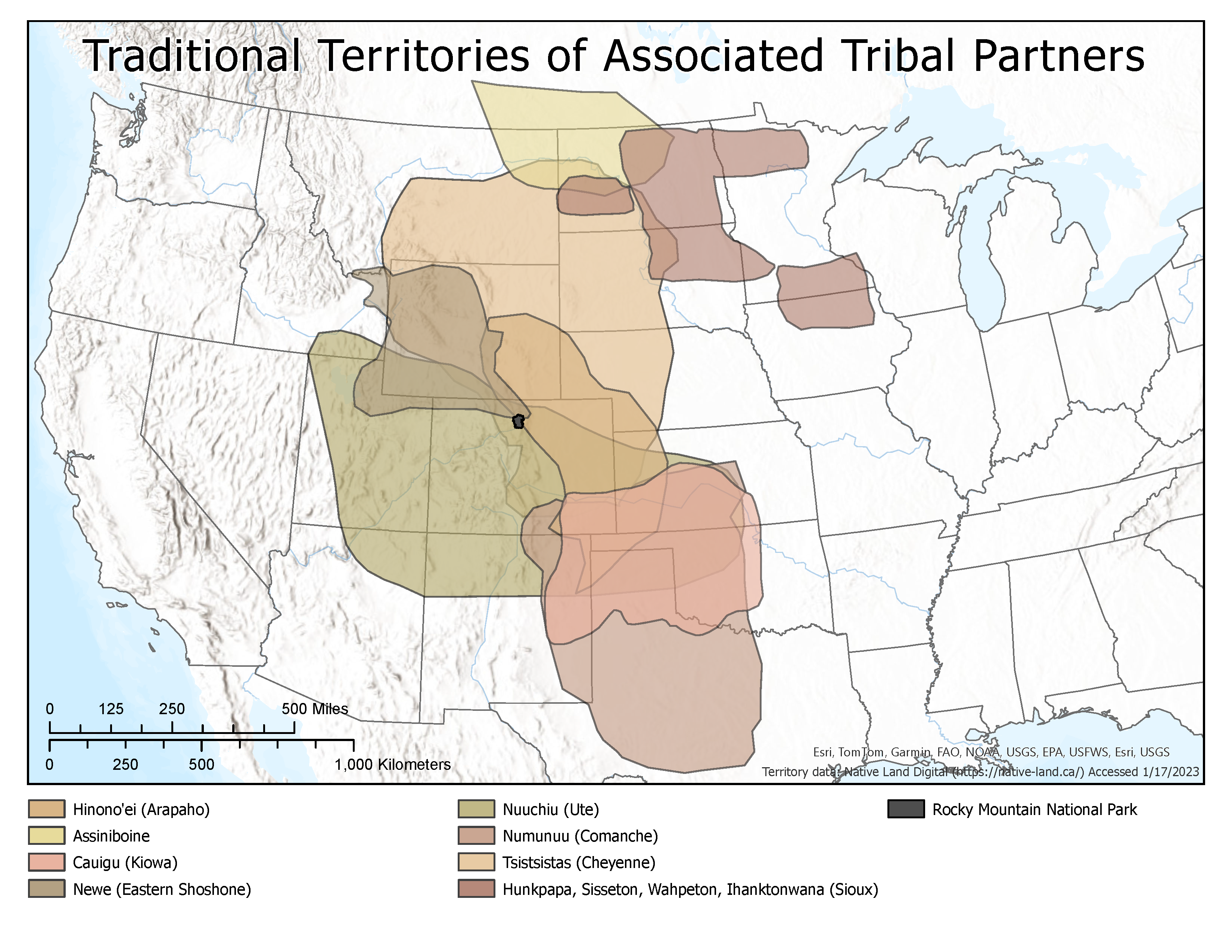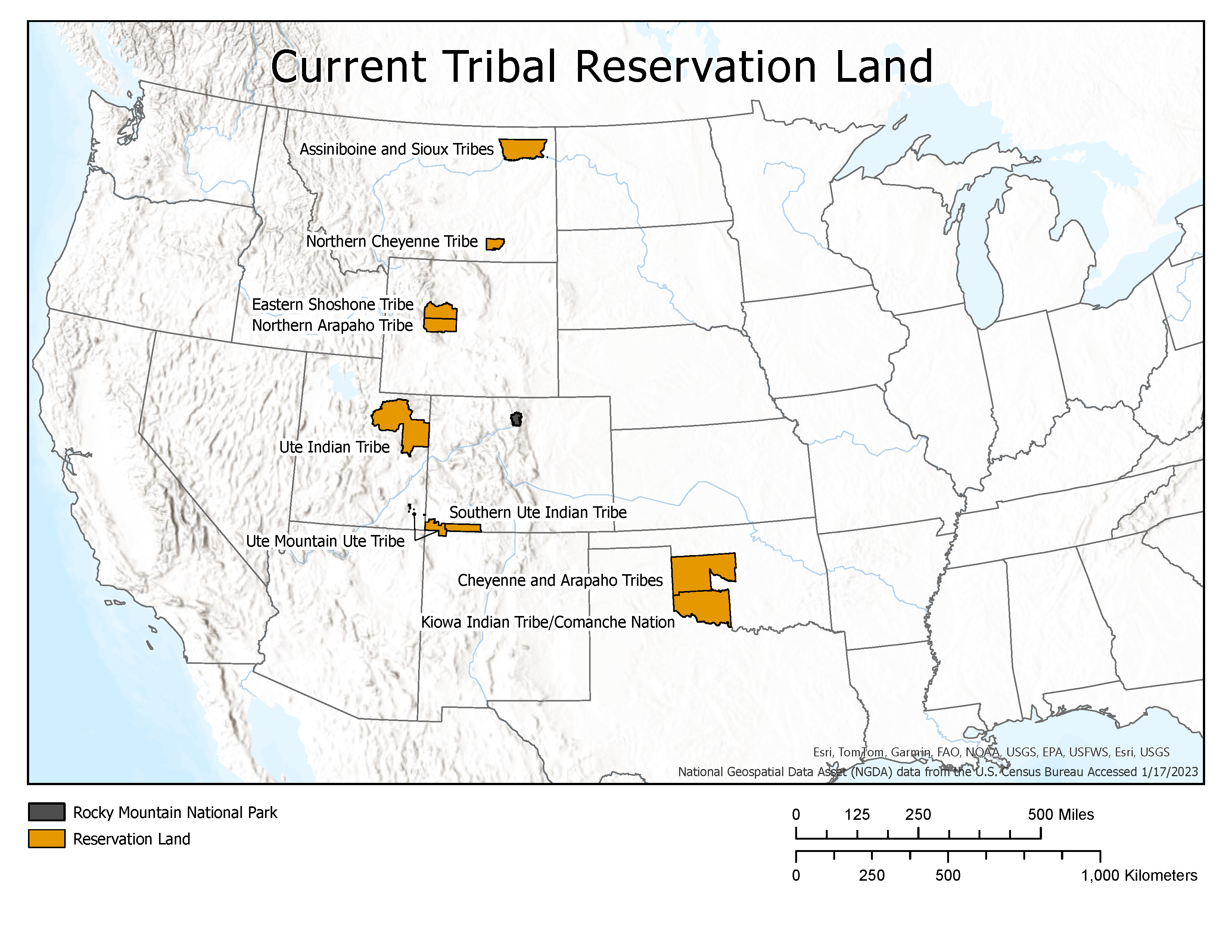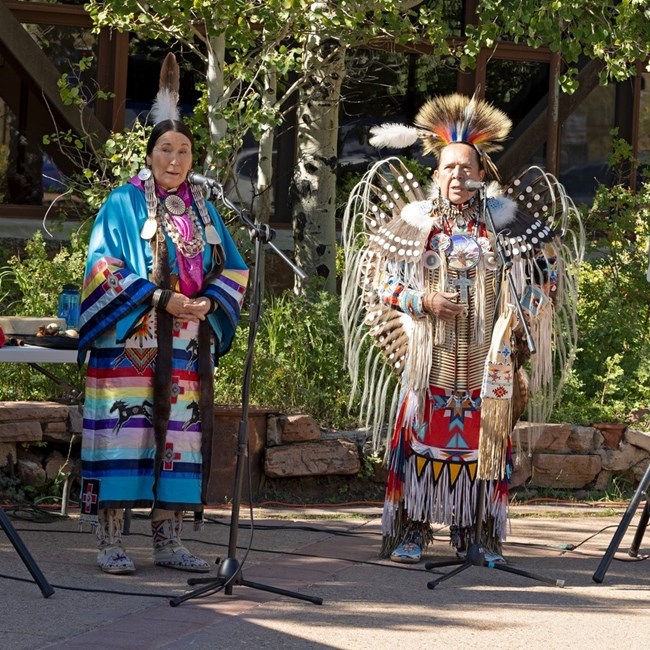
NPS What is now Rocky Mountain National Park is part of the traditional homeland and territory of many present-day Tribal nations including, the Assiniboine and Sioux Tribes of the Fort Peck Indian Reservation, Montana; Cheyenne and Arapaho Tribes, Oklahoma; Comanche Nation, Oklahoma; Eastern Shoshone Tribe of the Wind River Reservation, Wyoming; Kiowa Indian Tribe of Oklahoma, Northern Arapaho Tribe of the Wind River Reservation, Wyoming; Northern Cheyenne Tribe of the Northern Cheyenne Indian Reservation, Montana; Southern Ute Indian Tribe of the Southern Ute Reservation, Colorado; Ute Indian Tribe of the Uintah & Ouray Reservation, Utah; and Ute Mountain Ute Tribe of the Ute Mountain Reservation, Colorado, New Mexico, and Utah. - Clifford Duncan, Ute Indian Tribe elder
- Terry Knight, Ute Mountain Ute elder
Traditionally Associated Tribes of Rocky Mountain National Park
Traditional TerritoriesThe traditional territories of Tribal Nations associated with Rocky Mountain Park were much larger than reservation lands today. The Nuuchiu* (Ute) people are the oldest continuous residents of Colorado and Rocky Mountain National Park, living at the higher elevation areas during the summer months and moving down to the plains in the winter. Hinono’ei (Arapaho) and Tsistsistas (Cheyenne) bands were also seasonal residents of the Rocky Mountains by the time settlers arrived in what is now the park and the surrounding areas. Areas in and around the park made up parts of the extended territories of other tribes, including the Nakona, Lakota, Dakota, and Nakota (Assiniboine and Sioux), the Newe (Eastern Shoshone), the Numunuu (Comanche), and the Cauigu (Kiowa). They regularly travelled to these places to hunt and gather resources. 
Current Reservation BoundariesFederal policy before, during, and after the Reservation period (1851-1887) caused the forced removal and dispossession of Indigenous people from their ancestral homelands. Today, Tribal nations connected with Rocky Mountain National Park live on and off reservations located some distance from the park. ConsultationTraditionally Associated Tribal nations have a unique relationship with Rocky Mountain National Park. As sovereign nations and the original inhabitants of the land now within park boundaries, RMNP has differing responsibilities to Tribal partners than other types of stakeholders. The Superintendent and Tribal partners engage in formal nation-to-nation consultation when park projects may impact the Tribes or Tribal land. 
NPS Indigenous ConnectionsRocky Mountain National Park is working to improve how we tell Indigenous stories. The Indigenous Connections project is a collaborative effort to regularly host cultural demonstrators at the park and to provide accurate and respectful information to park visitors and staff alike. Links to Additional Resources
|
Last updated: March 11, 2024
